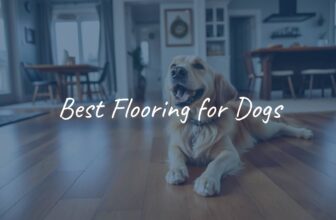
Medium-sized dogs are a popular choice for many people because they strike a balance between being easy to handle and offering strong companionship. They often suit a wide variety of homes and lifestyles. Medium breeds are not so big that they take over your space, but they’re also bigger than toy breeds, making them a good fit for active play and outings. If you’re thinking about bringing a dog into your home, understanding what makes a dog medium-sized, the reasons people choose them, how they differ from both small and large dogs, and which breeds are most loved can help you make the best choice for your family.

What Are Medium Sized Dogs?
When you hear “medium-sized dog,” you might think it only refers to a certain height, but it really covers a large group. Size is usually based on both weight and height, not just whether the dog can fit in your arms or in a carrier. This group includes dogs that are sturdy and active, with a body type that usually falls between the delicate look of smaller breeds and the bulk of the largest dogs.
How Is “Medium Size” Defined in Dog Breeds?
There’s no single rule for what counts as medium, but most people agree it’s mainly about weight and height once a dog is grown. Medium dogs offer a good mix between the tiny, fragile toy breeds and the heavy or very tall giant breeds. They’re usually not thin or overly heavy, which helps make them fit well in many homes.
Typical Weight and Height Range for Medium Sized Dogs
Most medium-sized dogs weigh about 30 to 70 pounds. Some, like Cocker Spaniels, are a bit lighter (20-30 pounds), while some, like male Labrador Retrievers, may be a little heavier. Their height is usually between 15 and 22 inches at the shoulder. These are just rough guides, and individual dogs may be outside this range depending on their breed and genetics.
| Breed | Weight (lbs) | Height (inches at shoulder) |
|---|---|---|
| Cocker Spaniel | 20-30 | 13.5-15.5 |
| Labrador Retriever (male) | 65-80 | 22.5-24.5 |
| Bulldog | 40-50 | 14-15 |

Why Choose a Medium Sized Dog?
Medium-sized dogs are attractive to many people not just because of their size but also because of their personality, energy, and how well they fit into homes. Many people find that medium-sized breeds are just right for meeting their needs as companions, playmates, and even as pets that can help with some types of tasks.
Benefits of Medium Sized Dogs for Families and Individuals
- They are big enough to play with children and help you feel safe, but small enough to handle easily indoors.
- These breeds are often easier to travel with and take to the vet than larger breeds.
- They don’t cost as much to feed as giant breeds but aren’t as fragile as toy breeds.
- Many have calm, gentle natures, getting along well with both kids and other pets.
Common Situations Where Medium Dogs Are Preferred
- They’re ideal for families living in houses with small-to-average size yards.
- Medium breeds are good for active people who like walking, running, or hiking, since many have the energy for regular outings.
- Certain breeds, such as Bulldogs or Whippets, adapt well to apartment living if they get enough daily exercise.

How Do Medium Sized Dogs Compare to Small and Large Breeds?
Choosing the right sized dog often comes down to space, lifestyle, grooming, and cost. Here’s how medium-sized breeds usually compare:
Space and Lifestyle Suitability
- Medium dogs don’t need a large house, but they generally do better if they have room to move around.
- They are more adaptable than large breeds which often need big yards, and they aren’t as easily lost in a large space as very small dogs.
- Many medium dogs can happily live in an apartment as long as they get regular exercise.
Grooming and Maintenance Needs
- Grooming needs vary-some have short, easy-care coats (like Whippets), while others (like Standard Poodles) need regular trimming and brushing.
- Breeds with thick fur, like the Siberian Husky, shed more and need more brushing.
- Some medium breeds can have unique needs; Dalmatians, for example, shed a lot despite having short hair.
Cost of Ownership
- Food and basic supplies (like beds and toys) cost more than for tiny breeds but not as much as for the largest dogs.
- Vet bills are usually lower compared to giant breeds, but higher than for small dogs.
- Health problems can push costs up for certain breeds (Bulldogs often need special care).
- Adoption or breeder prices change a lot depending on breed and where you get your dog.
What Are the Most Popular Medium Sized Dog Breeds?
Medium-sized breeds are found in many different types, with options to suit most families or individuals. Here are some well-known and much-loved examples:
- Australian Shepherd: These are smart, loyal, and love having a job to do. They are active dogs that enjoy space to run (40-70 lbs).
- Border Collie: Known for intelligence and athletic ability. They need mental and physical activity every day (30-55 lbs).
- Cocker Spaniel: Gentle, cheerful, and known for their beautiful coats and friendly personality (20-30 lbs).
- Bulldog: Stocky, calm, and gentle. Their shorter snout means they do better in mild climates (40-50 lbs).
- Boxer: Playful and protective, Boxers are good for active families who will give them lots of exercise (50-80 lbs).
- Siberian Husky: Famous for their bright eyes and stamina, they do best with lots of activity, especially in cooler areas (35-60 lbs).
- Whippet: Fast and quiet, these dogs like running but are calm in the home (25-40 lbs).
- American Staffordshire Terrier: Muscular and friendly, they’re loyal to their families and do well with training (Males: 55-70 lbs; Females: 40-55 lbs).
- Basset Hound: Laid-back, with long ears and a powerful sense of smell. Good for quieter homes but need daily walks (40-65 lbs).
- Beagle: Cheerful and energetic, good with children and other dogs (20-30 lbs).
Other favorite breeds in this group include the Australian Cattle Dog, Standard Poodle, Airedale Terrier, English Springer Spaniel, Soft Coated Wheaten Terrier, Portuguese Podengo, Samoyed, Vizsla, and Chinese Shar-Pei. Each has their own unique personalities and care needs.

What Are the Key Characteristics of Medium Sized Dogs?
Medium-sized dogs often share a balanced personality. They are usually playful but stable, making them well-suited for lots of different homes.
Temperament and Personality Traits
- Medium dogs commonly mix friendliness and playfulness with steady, dependable behavior.
- Some are laid-back (like Bulldogs and Whippets). Others are energetic (like Brittanys and Shetland Sheepdogs).
- Many are known for being eager to learn and easy to train, which helps them fit in well with families.
Exercise and Activity Requirements
- Exercise needs range from relaxed to very active, depending on the breed.
- Active breeds like the Border Collie or Australian Shepherd need daily, high-energy activities and mental challenges.
- Less active breeds, like Basset Hounds, enjoy slow walks but still need exercise to keep healthy.
Trainability and Intelligence
- Medium dogs like Border Collies and Standard Poodles are among the smartest, often excelling at learning commands and tricks.
- Most respond well to positive, reward-based training.
- Early training and lots of mental stimulation help keep them happy and well-behaved.
What Are the Health Considerations for Medium Sized Breeds?
While many medium-sized dogs are healthy, like all dogs, they can face certain health problems. It’s smart to learn about common issues before picking your dog.
Common Health Issues in Medium Dogs
- Bulldogs often have trouble with breathing and skin infections due to their short noses and wrinkles.
- Basset Hounds can develop ear infections thanks to their long ears.
- Dalmatians sometimes have a lot of loose hair and can be nervous if not trained and socialized well.
- Hip and elbow problems can show up in breeds that are energetic and active, like Labrador Retrievers and Australian Shepherds.
Expected Lifespan
Most medium-sized dogs live about 10 to 15 years. Some, like Standard Poodles, can live as long as 18 years. Others, such as Bulldogs, might only live 8-10 years. Good food, exercise, and regular vet visits help them live longer and stay healthier.
Diet and Nutrition Guidance
- Puppies need food made for their growth.
- Active adults need higher calories and protein, calmer ones need less.
- Older dogs usually need fewer calories and special food for joints and to manage weight.
- High-quality dog food, the right portions, and no overfeeding are important to avoid health problems like obesity.
- Ask a vet for advice on what and how much to feed your specific dog.

What Should You Think About Before Adopting a Medium Sized Dog?
Getting a dog is a big choice. Make sure you’re ready for what a medium-sized breed needs for a happy life with you.
Owner Experience and Commitment
- Some medium breeds are fine for beginners (like Labrador Retrievers), while others (like Huskies or German Pinschers) do better with experienced owners.
- All dogs need training, daily care, regular exercise, fun activities, and vet check-ups.
- Be honest about how much time and effort you can give, as having a dog is usually a 10-year (or longer) commitment.
Best Living Environments
- Medium dogs usually do well in houses with yards but many can adapt to apartments if they get daily outdoor time and enough space to move around.
- Breeds like Bulldogs and Whippets suit smaller spaces, as long as they get regular walks.
- Consider how easy it is for your dog to get exercise and if your home has enough space for them to be comfortable.
Compatibility with Children and Other Pets
- Most medium dogs are good with children and other pets, especially if they are well socialized when young.
- Some, like Staffordshire Bull Terriers, are known for being gentle and protective with kids.
- Breeds used for herding (like Australian Cattle Dogs) may need to be taught not to herd children or other pets.
- Always watch early interactions between your dog, kids, and other pets to make sure everyone gets along safely.
Frequently Asked Questions about Medium Sized Dogs
What Breeds Are Best for First-Time Owners?
- Labrador Retriever: Friendly, smart, eager to learn.
- English Springer Spaniel: Quick learners, easy to train, love being with people.
- Cocker Spaniel: Happy and gentle, usually great with families.
These breeds are usually easier for new owners to manage and are quick to fit into home life.
Are Medium Sized Dogs Good Apartment Pets?
Yes, many medium dogs do well in apartments if they get enough exercise. Calmer breeds, such as Bulldogs and Whippets, are especially good for apartment living. High-energy breeds can also adapt if you walk or play with them outside every day.
How Much Daily Exercise Do Medium Dogs Need?
- Most medium breeds need at least 30-60 minutes of exercise daily.
- Very active types (like Border Collies) need an hour or more of hard play or work.
- Laid-back breeds will be happy with shorter walks and a bit of play.
Watch how your dog behaves-if they seem restless or start acting out, they may need more activity and time with you.






